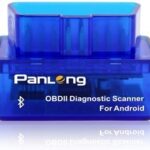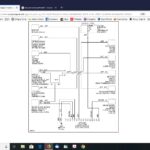OBD2, or On-Board Diagnostics II, is a standardized system found in All Obd2 Vehicles manufactured since 1996 (gasoline) and 1997 (diesel) in the United States. This system revolutionized vehicle diagnostics by enabling real-time monitoring of emission-related components and overall vehicle health. Understanding how OBD2 works in your vehicle can help you maintain its performance, fuel efficiency, and emissions compliance.
The Role of OBD2 in All OBD2 Vehicles
In all OBD2 vehicles, the system continuously monitors various components, including the engine, transmission, catalytic converter, and more. When a malfunction is detected that could affect emissions or performance, the OBD2 system illuminates the “Check Engine” or “Service Engine Soon” warning light on your dashboard.
How OBD2 Works
The OBD2 system in all OBD2 vehicles relies on a network of sensors and a central computer module to gather and analyze data. This data is compared against pre-programmed parameters. If a discrepancy is found, a diagnostic trouble code (DTC) is stored in the computer’s memory, and the warning light is triggered.
Accessing OBD2 Data in All OBD2 Vehicles
All OBD2 vehicles are equipped with a standardized 16-pin connector, typically located under the dashboard on the driver’s side. This connector allows access to the stored DTCs and other valuable data using an OBD2 scanner.
Benefits of OBD2 in All OBD2 Vehicles
OBD2 offers several key advantages for all OBD2 vehicles:
- Early Problem Detection: Identifying issues early can prevent costly repairs down the road.
- Improved Emissions Control: OBD2 helps ensure vehicles meet emissions standards, contributing to cleaner air.
- Enhanced Diagnostics: The system provides specific fault codes, enabling technicians to quickly diagnose and repair problems.
- Increased Fuel Efficiency: Addressing malfunctions detected by OBD2 can optimize fuel consumption.
Smog Checks and OBD2 in All OBD2 Vehicles
For all OBD2 vehicles in California, the Smog Check inspection now primarily relies on the OBD2 system. Technicians use a scan tool to check for stored DTCs and readiness monitors. Incomplete readiness monitors, often caused by a recently cleared code or battery disconnection, can result in a failed inspection.
Aftermarket Parts and Modifications in All OBD2 Vehicles
While aftermarket parts are permissible in all OBD2 vehicles, they must be functionally equivalent to OEM parts and not negatively impact the OBD2 system. California requires aftermarket manufacturers to obtain an exemption from CARB before selling performance-enhancing parts.
OBD2 vs. OBD I
Prior to OBD2, OBD I systems lacked standardization and only monitored a limited number of components. OBD2’s comprehensive approach significantly improved diagnostic capabilities and emissions monitoring in all OBD2 vehicles.
Beyond OBD2: OBD III
OBD III represents the future of vehicle diagnostics, envisioning wireless transmission of OBD data for remote monitoring. This technology could streamline emissions inspections and facilitate proactive maintenance. While not yet mandatory, OBD III holds promise for even more efficient vehicle management.
Conclusion
OBD2 is an essential system in all OBD2 vehicles, playing a crucial role in emissions control, diagnostics, and overall vehicle health. Understanding its function and utilizing its capabilities can help vehicle owners maintain their cars efficiently and contribute to a cleaner environment. For more in-depth information about California’s OBD program, refer to the CARB On-Board Diagnostic Program website.


